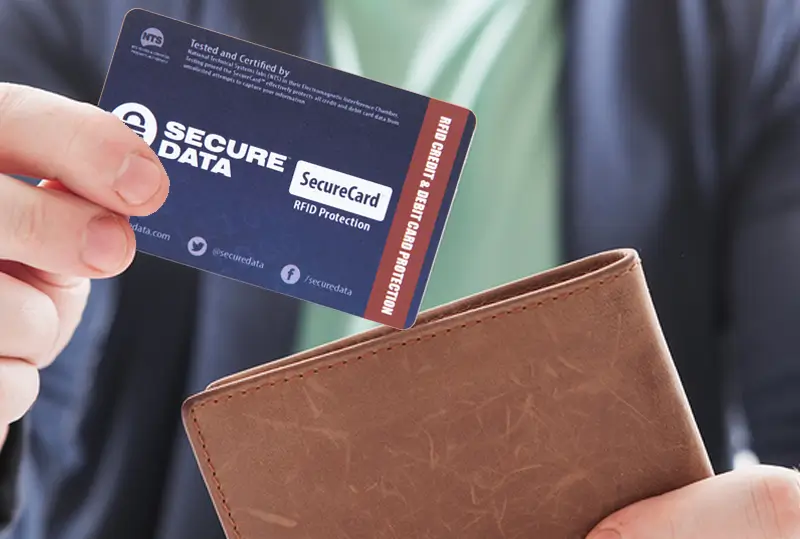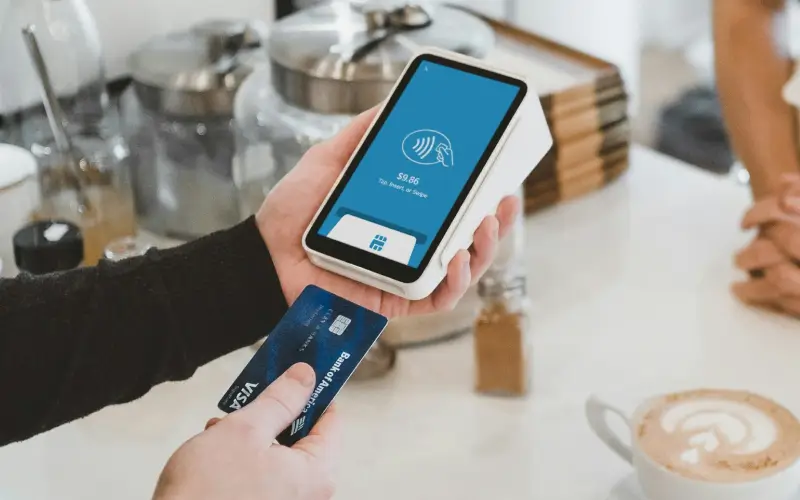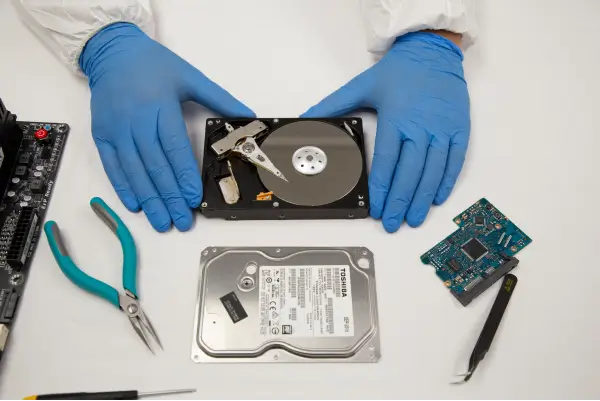Imagine walking through a crowded marketplace, a shopping mall, or just a busy street, absorbed in the vibrant sights and sounds. Unbeknownst to you, a thief brushes past, and within seconds, your credit card details are stolen without the card ever leaving your pocket. This isn't a scene from a futuristic movie; it's a real-world risk posed by a modern crime known as crowd hacking or crowd hacking. These thieves use technology to silently steal personal information such as credit and debit cards, passports, and other RFID-tagged items from several feet away, making crowd hacking a growing concern in crowded places.
The repercussions of such theft extend far beyond the immediate financial loss, encompassing potential identity fraud and a lengthy recovery process. In response to this growing threat, SecureData unpacks the mechanics of crowd hacking and introduces the SecureCard RFID Blocker, a cutting-edge solution designed to fortify your wallet against these invisible assailants.
The Rise of Crowd Hacking
At the heart of this modern menace lies Radio Frequency Identification (RFID) technology, a system that utilizes radio waves to read, transmit, and capture information stored within tags attached to contactless payment cards, ID cards, passports, and key cards.
These RFID tags, embedded with microchips and linked to antennas, operate on standard radio frequencies — predominantly 13.56 MHz for banking and security documents and 125 kHz and 13.56 MHz for various access passes and tags. Remarkably, these tags can be read from distances up to several feet away, even without a direct line of sight or contact, making them convenient yet vulnerable to exploitation.
The innovation and cost reduction in RFID tag production have led to their widespread use, providing a seamless interaction for users ranging from swift payment transactions to secure access control. However, this technological leap has also paved the way for digital thieves to exploit the system, enabling them to extract personal information from unsuspecting victims through a practice known as RFID skimming or digital pickpocketing. By employing portable, battery-operated readers, these perpetrators can intercept the communication between RFID chips and legitimate readers, silently harvesting data without the cardholder's knowledge.
Crowd Hacking Doesn't Require a Physical Card
This form of crowd hacking doesn't require the thief to steal the card physically; instead, they only need to be near the victim. Most RFID systems are designed for short-range use, typically a few inches, to prevent unauthorized scanning. Yet, with powerful RFID readers, hackers can extend this range to over 30 meters, posing a significant security risk.
The attack's simplicity and the passive nature of RFID communication mean that individuals might unknowingly compromise their financial security and personal identity each time they publicly carry an unprotected RFID-enabled card.
According to FICO, the number of cards affected by card skimming year on year was up by 77% at the end of 2023. The FBI has estimated that card skimming costs financial institutions and their customers more than $1 billion annually. The risks have been acknowledged by industry giants such as Visa, which has highlighted the potential for RFID-enabled cards to be surreptitiously interrogated or skimmed from afar, necessitating innovations in RFID-blocking technologies.
What Is RFID Blocking Technology
RFID blocking works by creating a protective barrier that interferes with radio waves, thereby preventing RFID readers from accessing the data stored on RFID chips within your cards or passport. This is achieved through materials like carbon fiber and aluminum that either reflect or absorb the radio waves, effectively neutralizing the electromagnetic energy required to power the chip and transmit information.
Some RFID blocking solutions, like the SecureCard RFID Blocker, incorporate advanced technology that goes a step further by emitting "white noise" or using active shielding mechanisms. These methods disrupt the communication between the RFID chip and the scanner, ensuring that your personal and financial information remains invisible and inaccessible to unauthorized RFID readers.
The SecureCard Advantage: Beyond Protection
The SecureCard RFID Blocker emerges as a formidable guardian against the pervasive threat of digital thieves and crowd hacking, bringing with it a host of benefits designed to shield your wallet's contents with unparalleled efficacy. At its heart, SecureCard leverages advanced RFID-blocking technology to create an invisible fortress around your personal and financial information, ensuring that your cards remain unseen and unreachable by unauthorized RFID scanners.
Unmatched RFID Blocking Capability
SecureCard has been rigorously in-lab tested and audited, bearing the NTS Certificate: PR053811-ACT1005612, which makes any credit cards within its 10mm e-field utterly invisible to digital thieves’ RFID readers. This immediate sphere of protection ensures that your most sensitive information, stored on credit, debit, and identification cards, remains shielded against unauthorized scans. Effectively, neutralizing the threat posed by hackers equipped with scanning devices aiming to capture your card numbers and other critical details.
SecureCard employs a dual-action protective mechanism where, upon detecting an RFID scanner's radio frequency, it emits white noise, which masks the information on your RFID chips, while its radio frequency-blocking component further barricades your data from hackers. This comprehensive approach ensures that a broad spectrum of cards, be it credit cards, debit cards, driver’s licenses, transit cards, or identification cards, are rendered invisible to potential threats, safeguarding up to six cards at once.
Tip: Insert the SecureCard alongside your passport, precisely where the information chip is embedded. This strategic placement obstructs criminals from scanning and accessing your passport's ID chip.
Practically Designed for Everyday Convenience
Understanding the importance of convenience and security, SecureCard boasts a design that seamlessly fits into any wallet or money clip. Measuring 3.4 by 2.1 inches and weighing a mere 0.3 ounces, it mirrors the dimensions and material of a standard credit card, allowing for effortless integration into your daily life without the need for additional accessories or bulky, specialized wallets. Its durability is assured through resistance to water, tears, and punctures, promising a longevity of 3-6 years of consistent protection without necessitating batteries or charging.
Final Thoughts: SecureCard As A Crowd Hacking Deterrent
In the face of growing concerns over crowd hacking, SecureData offers a comprehensive solution with the SecureCard RFID Blocker. This innovative tool, designed to make credit cards and passports invisible to unauthorized RFID scanners, and stands as a fortification against the invisible threats of digital theft.














